

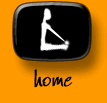 |
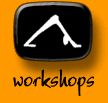 |
 |
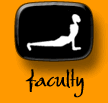 |
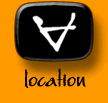 |
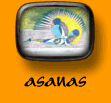 |
|
DOWNDOG | EAGLE | COBRA | HERO | HALF MOON | CORPSE | GATE
TRIANGLE | PEACOCK | LOCUST | COBBLER | SHOULDER STAND HEADSTAND | BRIDGE | CAMEL | COW FACE | UP BOW | INVERTED STAFF SEATED WIDE ANGLE | HEAD TO KNEE | TORTOISE | DANCER NOOSE  |
| Upavishta Konasana ~ Seated Wide-Angle Pose Images by Nancy Van Kanegan Sit down and open your legs wide — but not necessarily as wide as you can. According to John Friend and some other teachers I’ve studied with, the optimal opening is between 110 and 120 degrees. In other words, there should be more than a right angle between the legs but not such a wide angle that the legs form almost a straight line across (180 degrees). That’s a different pose, called samakonasana, which is done sitting straight up, not bending forward. Also, by keeping the legs around 120 degrees, you’ll get more stretch in the hips and lower back and find it easier to keep the pelvis from rotating forward too much and causing a painful (and sometimes long-lasting) tear in the tendons that connect the hamstrings to the sitting bones. So, once you have the legs where you want them, lean forward a little, reach underneath one buttock at a time and pull it back and out, pushing your groins down and wriggling your sitting bones back as you do. Then, with one hand on the inside of a thigh and the other on the outside, roll the flesh so the inner thigh descends and the outer thigh lifts up and out. Do the same on the other thigh. These actions will help the sitting bones and thighbones ground down firmly. It will also help get the floor of the pelvis level. That’s where both sitting bones are rooted down, and the pubic bone and tail bone are even with each other. If you’re stiff in the hamstrings and lower back, and the pelvis stays tucked under (with the pubic bone up and the lower back rounded) no matter how much you pull on the buttocks or push the groins down, try this. Sit on a folded blanket or folded mat to elevate the pelvis. This will enable it to tip forward more and better align the spine. Or bend the knees a little, perhaps even placing a rolled towel under them so the legs can ground down without tugging the back of the pelvis under or straining the knees. Because upavishta konasana gives the hamstrings, back of the knees, inner thighs and groins such a strong stretch, be very careful (maybe just sit tall with the legs active) or skip this pose if you have an injury in those areas. If you have asthma or are in the later stages of pregnancy, do the pose sitting with your back against a wall and forget the forward bend part. Rotating the thighs inward should have brought your toes and kneecaps straight up. If it didn’t, make that happen. Firm the legs by drawing the muscles in toward the bones and up from the feet into the pelvis. Then extend through the heels, press out through the balls of the feet, and spread and extend the toes. With you hands behind your hips, push down into the sitting bones, back of the thighs, and heels and lift up out of the pelvis. Loop the shoulders up and back and lift the sternum (breastbone) toward your chin as you stretch up through the top of your head. Take a breath or two here while checking to see that you are sitting tall wide and open, with your shoulders over the hips, your sacrum moving in and up, and your tailbone in and down. If your spine is straight, you can start bending forward from the pelvis, keeping the front of your spine long, with your sternum pulling away from your navel. If your back starts to round and your shoulders hunch up, you may be going too far. Just stay sitting tall or maybe bending forward a little and work with the breath, lifting up and extending on the inhales and bending forward a micron or two on the exhales. You might even want to press into you hands to push yourself gently up and forward. If you can bend forward easily while keeping your spine extended, bring your arms around in front and put your finger tips on the floor, with the arms shoulder width apart. With each inhale lift up a little and bring the sacrum forward, and with each exhale, bend forward a bit more, spider walking your hands a little further out in front of you. Make sure your spine stays long and your shoulders broad and looping up and back as your heart opens down toward the earth. Keep your tailbone stretching down and in to free and lengthen the spine so you can bend forward more deeply without collapsing it. To help the tailbone stay down, lift your belly away from the thighs and wrap the outer thighs back and down as you stretch forward and down. If you can go at least half way down without hunching over, you may want to grab your shins, loop your big toes with your middle and index fingers, or grab the outside of your feet and pull yourself deeper into the pose. Gaze forward, not down, to help keep the spine extending. Stay in upavishta konasana for five deep breaths — or more if you really want to settle into this comforting asana. As you breathe in the pose, keep your leg muscles toned and your heart soft. With each inhale draw energy into your pelvis and take the pubic bones, thighbones and groins down some more. With each exhale, root your tail back and stretch forward and down more, pulling on your toes or feet or clawing the floor with your finger tips or palms to help lengthen the spine. To come out, lift up slowly with an inhale, releasing your hands if you
were holding your legs or feet, and keeping your legs strong and spine
long as you come back to sit tall. Bring your hands in prayer pose in
front of your heart and take another breath or two before you release
and rest, thanking the Earth for supporting you so well in this and everything
else you do. Text by Tim
Noworyta |
||
|
E-mail: info@yogamind.com | Return Home :: mindfully designed by braddon.com :: |